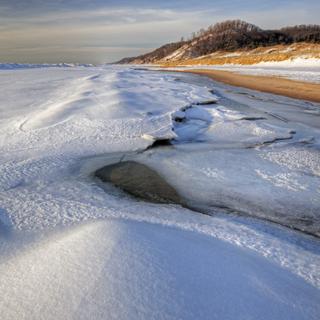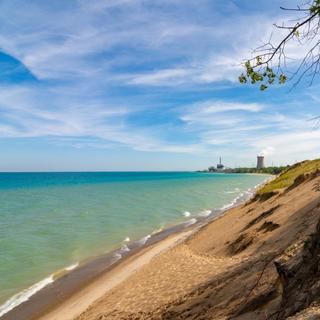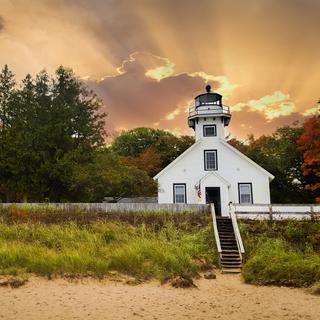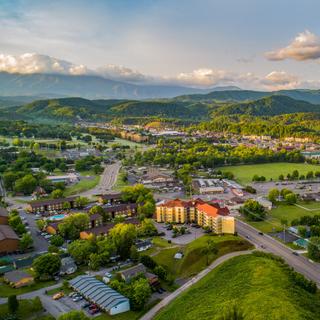Racine, WI weather and climate in 2025
Day
1 °C
Night
-6 °C
Sea
5 °C
Precipitation
51 mm
in month
Rainy days
11 days
in month
Daylight
9 hours
average
Sunshine
3 hours
average
Humidity
77 %
Weather charts for Racine, WI
Find more destinations like this
Closest destinations for Racine, WI
Closest cities for Racine, WI
Weather overview for Racine, WI
Weather overview
Racine, WI harbors a humid continental climate, providing a dynamic weather experience through the year. As winter transforms into lively spring, temperatures slowly climb from brisk lows around -9 °C (16 °F) C in January to refreshing 3 °C (38 °F) C by April. Summer welcomes warm days peaking at 26 °C (80 °F) C in July, retreating to pleasant 22 °C (72 °F) C as fall begins. Precipitation is fairly consistent, with monthly averages ranging from 42 mm (1.65 in) to 100 mm (3.94 in), bringing about 9 to 12 of rain, making umbrellas essential throughout the seasons. Relative humidity holds within the 67 % to 77 % range, contributing to the felt temperature and offering dewy mornings and damp evenings.
January weather
January in Racine brings the heart of winter with daytime highs around -1 °C (30 °F) C and night temperatures dropping to a chilly -9 °C (16 °F) C. Despite the cold, a moderate number of 11 days rainy or snowy days occur, and the wind blows steadily at 5 m/s, often feeling quite biting.
February weather
February sees a slight lift in temperatures with daytime highs inching up to 1 °C (34 °F) C, but nights remain frosty at -7 °C (19 °F) C. Lighter snowfall is typical, with around 9 days of precipitation, and brisk winds at 5 m/s.
March weather
March marks the onset of spring with temperatures reaching more comfortable highs of 6 °C (43 °F) C, though the nights can still be cold around -2 °C (28 °F) C. The precipitation increases slightly to an average of 55 mm (2.17 in), across 11 days, and winds start to ease at 4 m/s.
April weather
April showers and rising temperatures are hallmarks of this month, with daytime highs reaching 13 °C (55 °F) C. Night temps are milder but can dip to 3 °C (38 °F) C, and there's an increase in precipitation averaging 92 mm (3.62 in) over 12 days.
May weather
May in Racine sees further warming, with 18 °C (65 °F) C highs luring residents outdoors. Nights are comfortable at 9 °C (48 °F) C. Rainfall persists with an average of 92 mm (3.62 in), occurring across 12 days, while winds taper to a gentle 4 m/s.
June weather
As summer commences, June's temperatures climb to a pleasant 24 °C (75 °F) C during the day, though showers are still frequent for nearly 11 days. Nights are warm at 14 °C (57 °F) C, and winds slow to a calming 3 m/s.
July weather
July is Racine's warmest month, with high temperatures cresting at 26 °C (80 °F) C and nights staying cozy at 17 °C (63 °F) C. The month is not without rain, however, with precipitation averaging around 90 mm (3.54 in) over 10 days.
August weather
August slightly cools from July's zenith, with daytime averages at 26 °C (78 °F) C. Notably, nights are sultry at 17 °C (63 °F) C, and the rain, around 99 mm (3.90 in), touches down for nearly 10 days, accompanied by light winds at 3 m/s.
September weather
September's embrace of fall brings diminishing warmth, with temperatures topping at 22 °C (72 °F) C and nights cooling to a comfortable 13 °C (55 °F) C. The rain eases up slightly to 89 mm (3.50 in) across 10 days.
October weather
October's cooler weather is marked by highs reaching only 15 °C (60 °F) C and nights dipping to a brisk 6 °C (43 °F) C. A steady rain amount of 70 mm (2.76 in) falls over 10 days, and winds kick up to 4 m/s.
November weather
November ushers in more of the cold with daytime temperatures averaging 8 °C (47 °F) C, and the nights getting colder at around 0 °C (32 °F) C. Rainfall decreases to an average of 69 mm (2.72 in), spanned over 10 days, with winds at 4 m/s a constant companion.
December weather
December sees the year drawing to a close with chilly highs of 1 °C (34 °F) C and often sub-zero nights averaging -6 °C (20 °F) C. Rain and snow are likely, with a generous amount of 50 mm (1.97 in) falling on 11 days.
FAQs
What kind of clothing is suitable for Racine in January?
In January, you'll need heavy insulation: think down jackets, thermal layers, hats, gloves, and warm boots to combat the below freezing temperatures, typical of Racine's winter.
Is February significantly warmer than January in Racine?
February provides a modest respite from the January chill, with slightly higher daytime temperatures, though it's still important to dress warmly against the cold.
What changes does the spring equinox bring to Racine in March?
The spring equinox ushers in a period of transition where the days grow longer and temperatures gradually warm, reducing the prevalence of snow but increasing the chance of rain.
How do April showers manifest in Racine's climate?
April showers come in the form of increased rainfall, which breathes life into the spring flora while contributing to a noticeable 92 mm (3.62 in) of rain throughout the month.
What is the temperature range one can expect in May in Racine?
May's temperature range in Racine sees daytime peaks around 18 °C (65 °F) C, while night temps offer a cool relief at 9 °C (48 °F) C, conducive to a comfortable rest.
What kind of weather does summer start off with in Racine during June?
Summer in Racine starts with a mix of warmth and wetness, as frequent showers intermingle with appreciable daytime temperatures averaging 24 °C (75 °F) C.
What's the typical summer peak temperature during the day in Racine's July?
July in Racine brings the summer's peak heat, where typically one can experience daytime temperatures soaring up to 26 °C (80 °F) C.
Is August much cooler than July in Racine, or only slightly?
August in Racine is only slightly cooler than July, offering generous warmth with highs still averaging 26 °C (78 °F) C, making it ideal for summer activities.
How does Racine's weather transition in September as autumn sets in?
Autumn's onset in Racine sees a gradual drop in temperatures and a mellowing of rain, reflecting the seasonal shift towards cooler, drier weather.
Can we expect frost in Racine during October?
October may not regularly bring frost to Racine, but temperatures, particularly at night, hint at the impending chill of winter, so staying warm is a priority.
What kind of temperature drop does Racine experience in November?
November in Racine experiences a noticeable drop in temperatures, a definitive stride towards winter, demanding warmer attire and readiness for potentially icy conditions.
Is December in Racine mostly snowy or rainy?
December in Racine is typified by mixed precipitation, with snow becoming increasingly common as temperatures often dwell below freezing.
We make the most from 40 years of historical weather data to predict the best weather conditions.
Deciding on where to go for a holiday is hard sometimes. Get inspired by the most popular destinations.
We aggregate data from combining multiple weather sources to ensure accuracy of the highest order.







